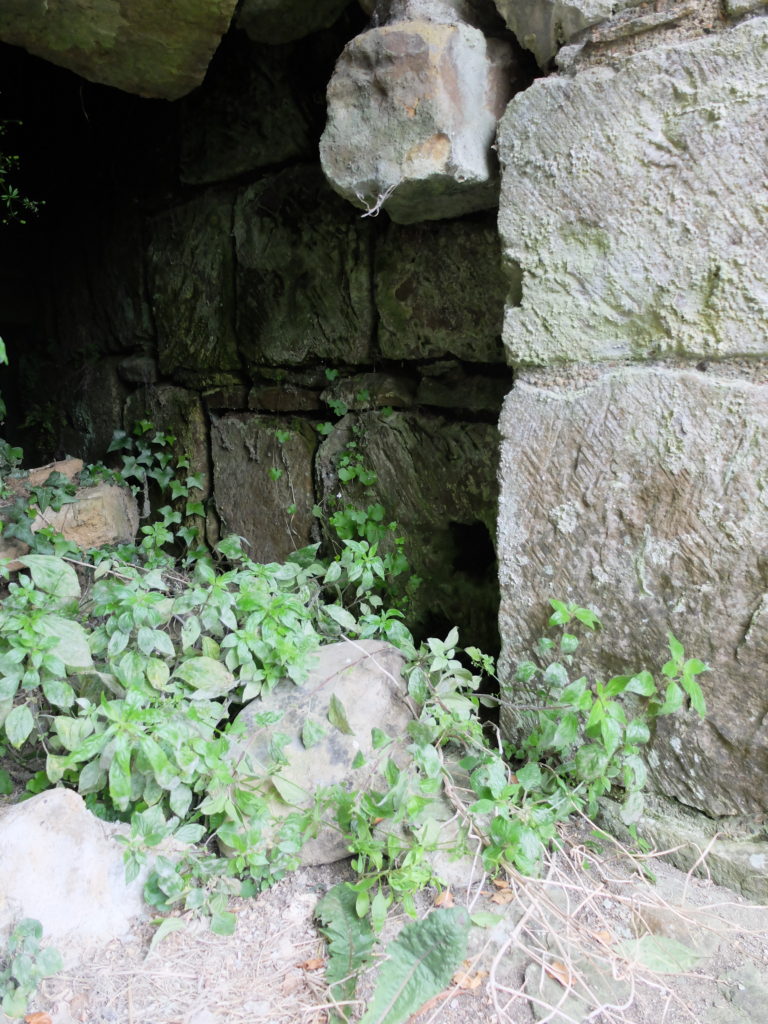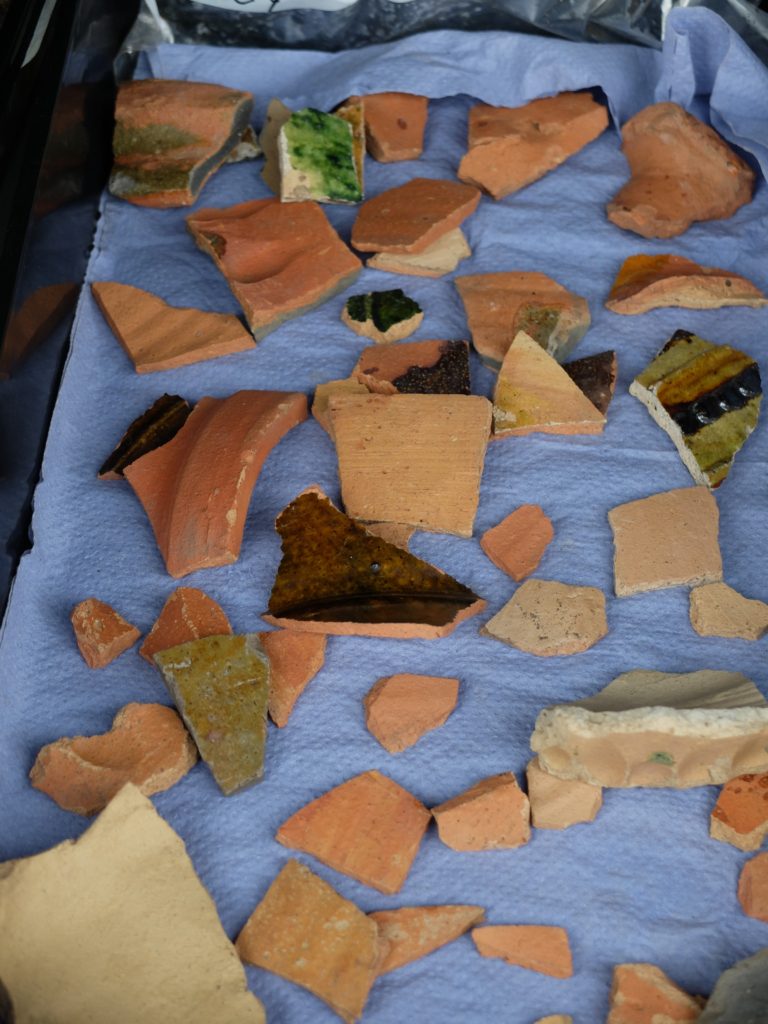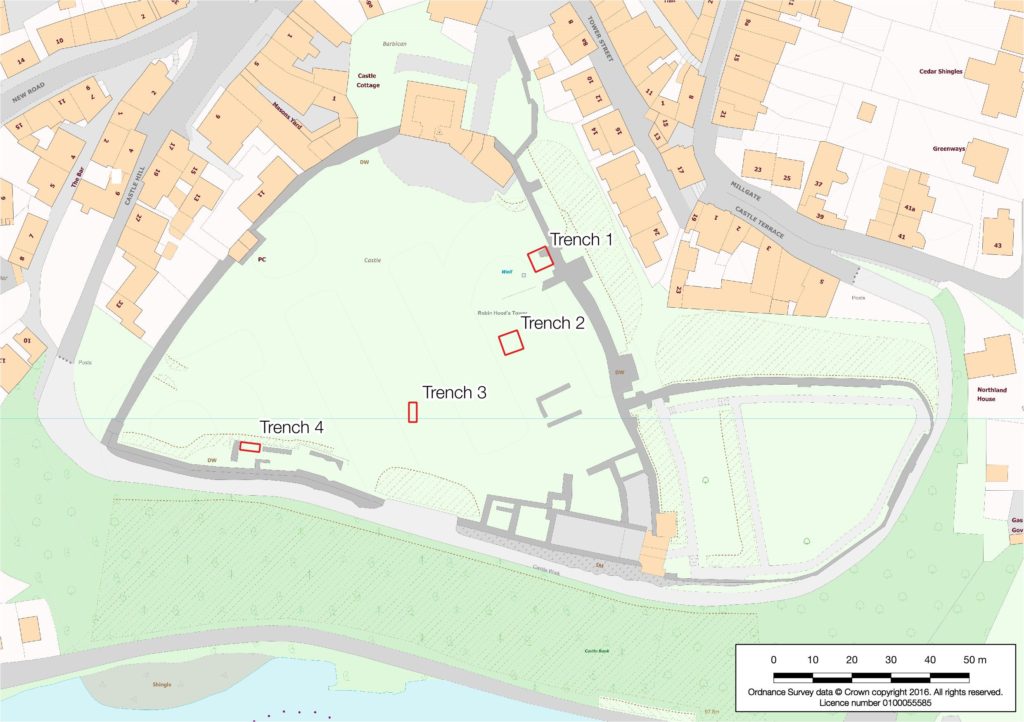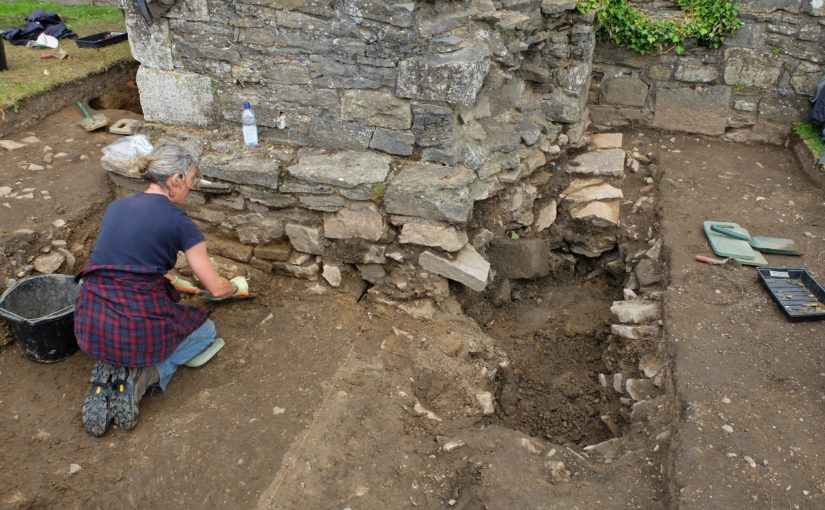By Excavation Director Jim Brightman of Solstice Heritage
Reflecting at the end of the second week—two thirds of the way through our dig at the Castle—it’s been an amazing journey so far. After the excitement of the tv cameras on Thursday and Friday, we are all now taking a well-earned Sunday off, allowing some thinking time for the theories and interpretations. Yesterday, we were privileged to welcome a group from the Castle Studies Trust (one of the key project funders and hosts of this very blog!) who came to look round the excavations and offer some of their wonderful expertise and knowledge to help bring focus to some of the stories we are revealing.

Trench 1 has proven to be the most complex in terms of the intercutting layers and structures (what archaeologists call ‘stratigraphy’). Although there is plenty of time left for our thoughts to change with new evidence, we currently think we have an original narrow door at the base of the curtain wall which was blocked during the medieval period. After this, a small square stone building was constructed against the wall, again at some point during the Castle’s medieval life. In terms of the large stone piers and low stone wall that we can see above ground, however, we are now confident that they are indeed 20th-century inventions built by the Ministry of Works.
One of the most interesting aspects of Trench 1 has been the fantastic amount of fine medieval pottery that has come out of both the mixed topsoil and upper layers, and now from sealed medieval deposits. With a major acknowledgement to the eye and experience of Erik Matthews, we can confidently say we have not only great examples of local and regional pottery, but also of imported French and Belgian pottery. This really shows the importance of Richmond Castle as a seat of power during its medieval heyday and the interconnected nature of authority spanning the Channel in this period.

With the end of the project in sight, over the coming week I’ll also wrap up the stories for Trenches 2 and 3, so do keep checking back!
Subscribe to our quarterly newsletter
Feature image courtesy of Dr Peter Purton.

